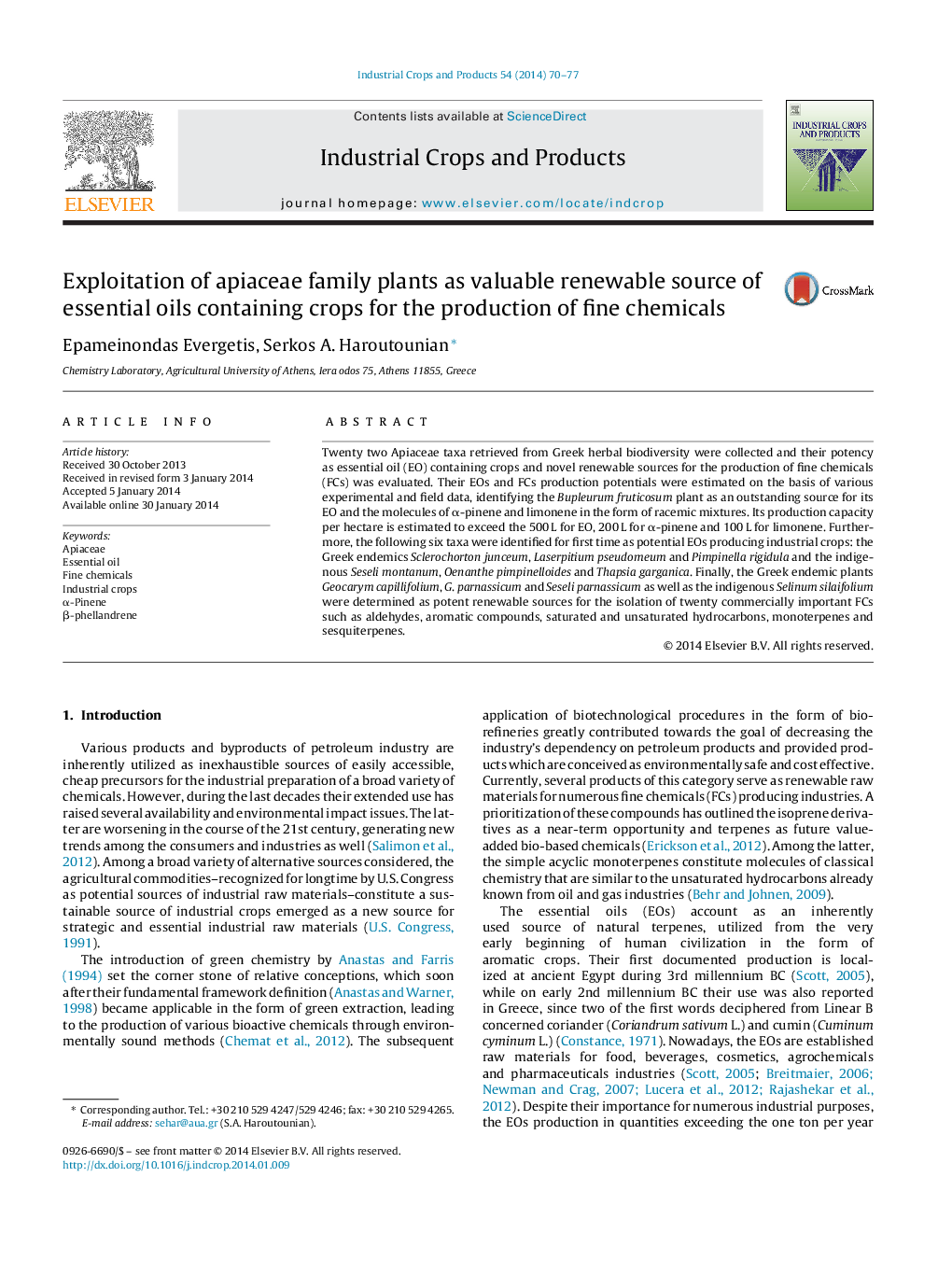| Article ID | Journal | Published Year | Pages | File Type |
|---|---|---|---|---|
| 4513355 | Industrial Crops and Products | 2014 | 8 Pages |
•Ten Apiaceae taxa were identified for the first time as potential EOs producing industrial crops.•Bupleurum fruticosum is capable to produce EO (520 L/ha), α-pinene (190 L/ha) and limonene (110 L/ha).•Angelica sylvestris L. produces β-phellandrene in 8.6 L/ha yield.•Geocaryum parnassicum produces germacrene-B in 3.8 L/ha yield.•The Greek endemic taxa Geocaryum capillifolium, G. parnassicum and Seseli parnassicum are potent sources of fine chemicals.
Twenty two Apiaceae taxa retrieved from Greek herbal biodiversity were collected and their potency as essential oil (EO) containing crops and novel renewable sources for the production of fine chemicals (FCs) was evaluated. Their EOs and FCs production potentials were estimated on the basis of various experimental and field data, identifying the Bupleurum fruticosum plant as an outstanding source for its EO and the molecules of α-pinene and limonene in the form of racemic mixtures. Its production capacity per hectare is estimated to exceed the 500 L for EO, 200 L for α-pinene and 100 L for limonene. Furthermore, the following six taxa were identified for first time as potential EOs producing industrial crops: the Greek endemics Sclerochorton junceum, Laserpitium pseudomeum and Pimpinella rigidula and the indigenous Seseli montanum, Oenanthe pimpinelloides and Thapsia garganica. Finally, the Greek endemic plants Geocarym capillifolium, G. parnassicum and Seseli parnassicum as well as the indigenous Selinum silaifolium were determined as potent renewable sources for the isolation of twenty commercially important FCs such as aldehydes, aromatic compounds, saturated and unsaturated hydrocarbons, monoterpenes and sesquiterpenes.
